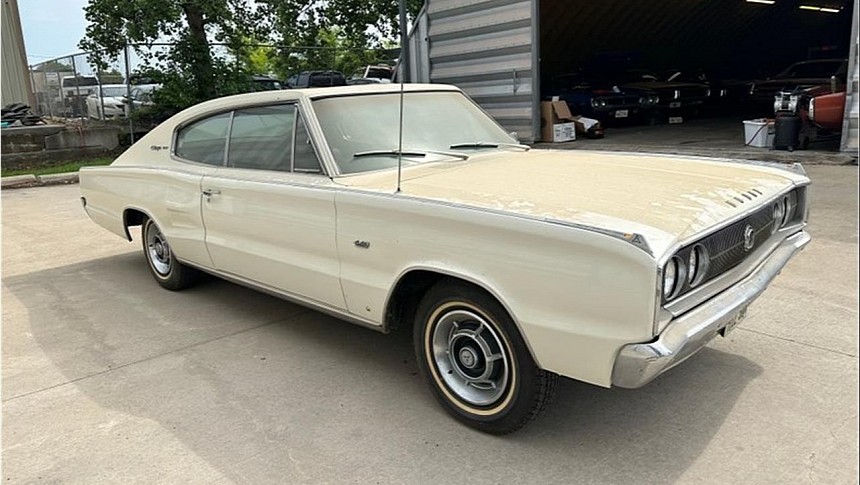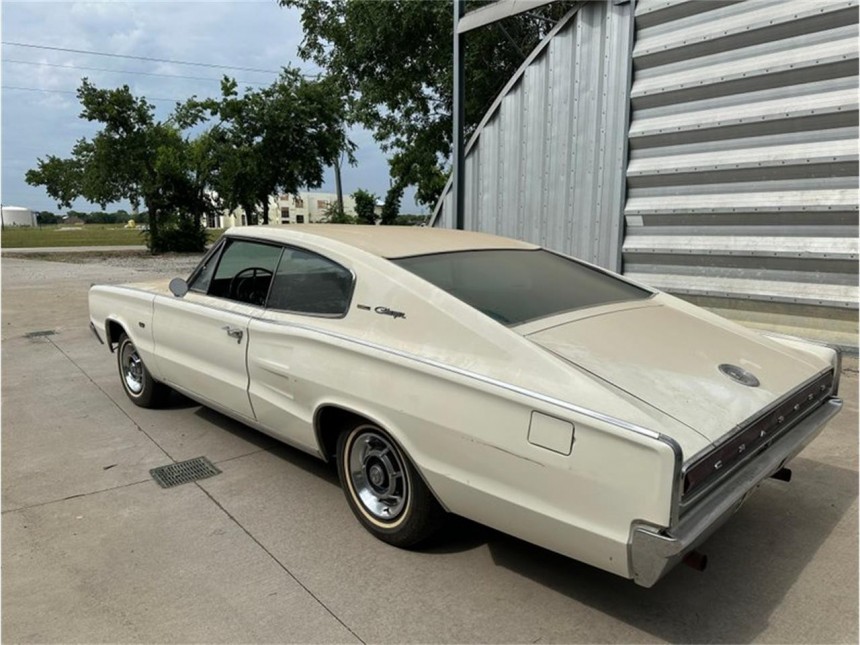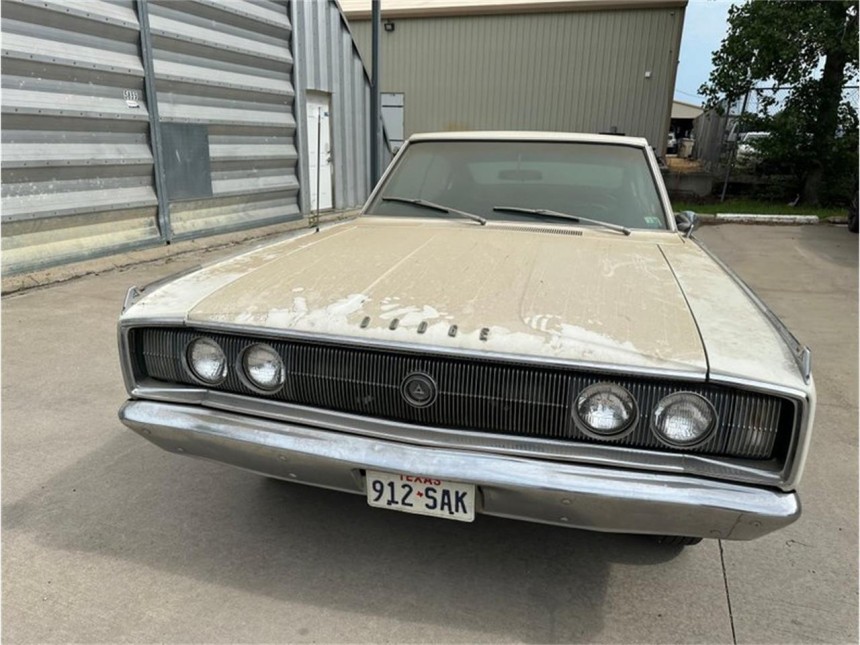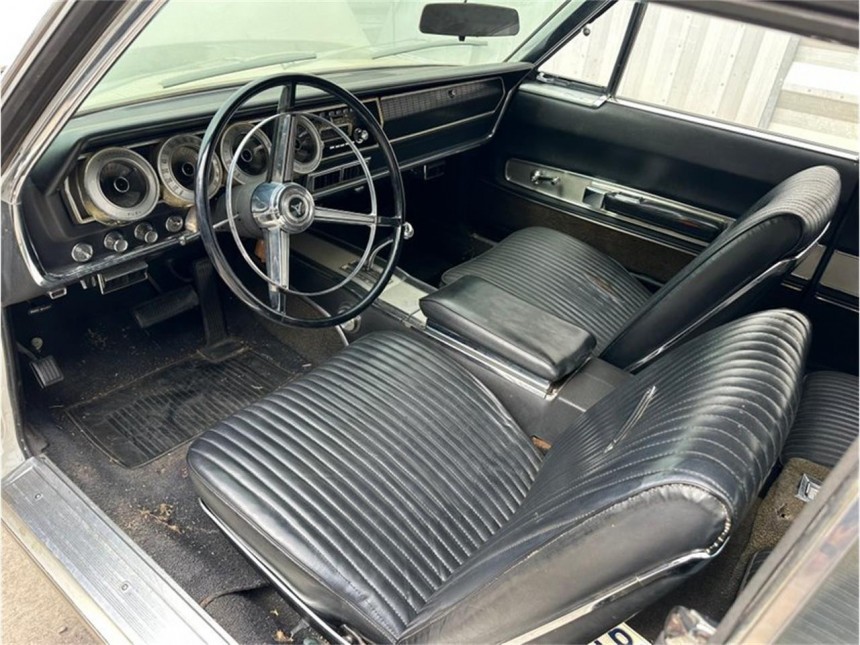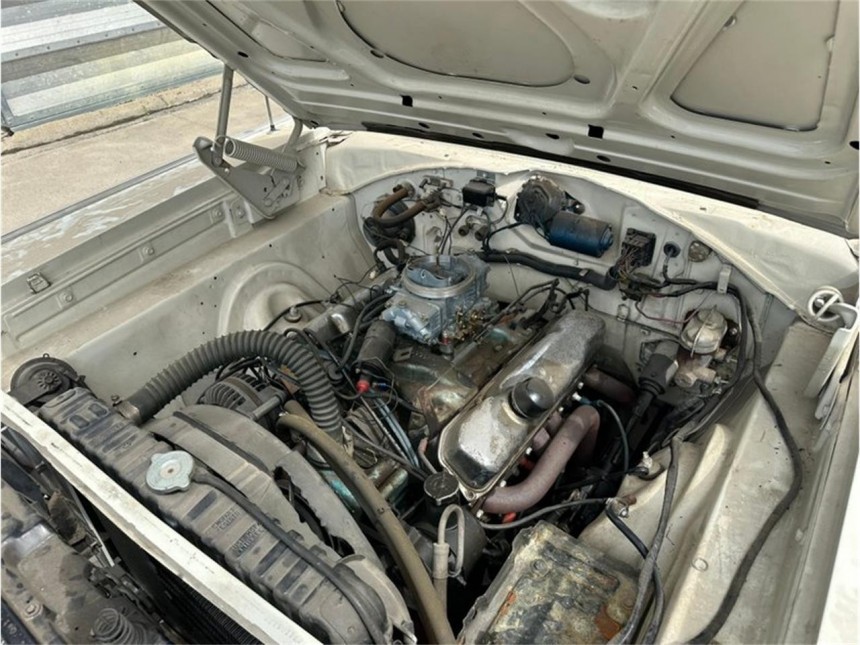The Dodge Charger came about as Chrysler Corporation’s answer to the muscle car riot against the mainstream automobile philosophy of early sixties America. The Mustang had turned the tables against the Barracuda in ’64, effectively beating Mopar at the ‘small-body-with-sporty-looks-without-luxury-pomp’ game. A retaliation was duly needed – and Chrysler haunted Ford’s sweet laurels sleep dreams with a full-size fastback.
Introduced in 1966, the Charger wasn’t a sales superstar – 37,300 units were assembled – but it served its hidden purpose of introducing the 426 cubic-inch (7.0 liters) Street HEMI lord of combustion hell to the general public. Not that it tipped the scales in Dodge’s favor regarding satisfying bean-counting bureaucrats, but it kicked competition in the rear valance.
For what is worth, the fastback styling wasn’t new to America any more than it was to Chrysler – the Plymouth Barracuda is the most obvious example. But a full-sized automobile that combined the sleek lines of a sloped back with the comfort treats of the inside wasn’t that common.
Granted, there was a notable lookalike –from afar (and from the side), it could have been mistaken as a stunt double for the Charger superstar: the AMC Marlin. However, the Dodge had something extra over the ‘personal luxury car’ from American Motors Corporation: big-block muscle.
And it wasn’t just the HEMI that packed a mighty punch. In 1967 – the last production year for the first generation of the Charger – another iconic V8 was introduced. The 440-CID (7.2-liter) Magnum wasn’t an insatiable horsepower ogre like its hemispherical-heads little brother, but torque-wise, it came pretty close.
The HEMI was good for 425 hp and 490 lb-ft / 431 PS and 664 Nm (it kept the same specs throughout its entire street existence between 1966 and 1971). The 440 wasn’t of the same monolithically absolutist V8 creed and did see several modifications.
Released in the Charger in 1967, the biggest-block from Mopar initially offered 375 hp and 480 lb-ft / 380 PS and 651 Nm from a four-barrel architecture. While power was significantly lower than the HEMI’s rating, tire-blazing torque wasn’t. Furthermore, the Magnum delivered the crank-punishing force at 3,200 RPM (as opposed to the 426’s 4,000 RPM).
And yet, despite this muscle abundance, the Charger took a nasty kick in the sales groin, nosediving to half the volumes from its initial year; 15,788 fastback Dodges rolled off the assembly line in 1967, with just 660 L-Code Magnum 440 V8s.
The Road/Track package wasn’t to come until a year later when the complete restyling of the Charger effectively quadrupled sales. But the buds of muscle car-ness R/T nobility were already blooming in ’67 when the 440 CID V8 was offered as an option. (Remember, the R/T Chargers would have the big-block 440 as standard, with the alternative being the overpowering 426 HEMI).
The 1967 model is one of the rarest Chargers made, and the L-code optional engine is among the unicorns. L was the trim tag letter used for the big 440-cube plant, and it came with a three-speed automatic (floor-shifted) or a scarce four-speed manual.
One of the elusive 1967 Dodge Chargers assembled with a 440 V8 heart and an automatic TorqueFlite 727 tranny is up for grabs, and it is a bundle of mixed feelings. It is a one-family-owned Mopar – the original buyer passed it to his son, who sold it to the current dealer – original-interior Charger with one repaint since 1967.
The car has been off the road for over twenty years, but being a Texas vehicle (and garage kept, at that) fended off humidity and corrosion. Sadly, the R/T engine is no more (clarification for purists: while the performance package was offered for the first time in 1968, it kept the previous year’s 440 four-barrel V8. The engine would have been identical to what our hero was gifted at birth, hence the R/T allusion).
Instead, a 383 now resides in the engine bay – the seller doesn’t specify the year of the replacement motor or its state of tune – topped by a Holley four-barrel double-pumper. Allegedly, the car is drivable, but a thorough go-through is recommended to make it roadworthy. Notably, the mileage is not mentioned, and there’s no telling what happened to the original big-block.
The three-on-the-floor ’67 Charger makes it one of 528 made for the model year, and it was linked to a 3.23:1 rear with a Sure Grip differential. It also received air conditioning, a 2-watt AM radio, and a tinted windshield.
The broadcast sheet details the entirety of attributes of this unusual Charger – see it in the gallery. Still, the essential aspect of this surviving relic is not disclosed. The price is a “call for details” type of arrangement.
This Dodge's correct sale value is hard to speculate since the market isn’t abundant in these rare oddballs. A complete 440 Charger from ’67 (meaning it retains its original motor, tranny, rear, interior, and body) is offered for anything between $40,000 and $50,000.
For what is worth, the fastback styling wasn’t new to America any more than it was to Chrysler – the Plymouth Barracuda is the most obvious example. But a full-sized automobile that combined the sleek lines of a sloped back with the comfort treats of the inside wasn’t that common.
Granted, there was a notable lookalike –from afar (and from the side), it could have been mistaken as a stunt double for the Charger superstar: the AMC Marlin. However, the Dodge had something extra over the ‘personal luxury car’ from American Motors Corporation: big-block muscle.
The HEMI was good for 425 hp and 490 lb-ft / 431 PS and 664 Nm (it kept the same specs throughout its entire street existence between 1966 and 1971). The 440 wasn’t of the same monolithically absolutist V8 creed and did see several modifications.
Released in the Charger in 1967, the biggest-block from Mopar initially offered 375 hp and 480 lb-ft / 380 PS and 651 Nm from a four-barrel architecture. While power was significantly lower than the HEMI’s rating, tire-blazing torque wasn’t. Furthermore, the Magnum delivered the crank-punishing force at 3,200 RPM (as opposed to the 426’s 4,000 RPM).
The Road/Track package wasn’t to come until a year later when the complete restyling of the Charger effectively quadrupled sales. But the buds of muscle car-ness R/T nobility were already blooming in ’67 when the 440 CID V8 was offered as an option. (Remember, the R/T Chargers would have the big-block 440 as standard, with the alternative being the overpowering 426 HEMI).
The 1967 model is one of the rarest Chargers made, and the L-code optional engine is among the unicorns. L was the trim tag letter used for the big 440-cube plant, and it came with a three-speed automatic (floor-shifted) or a scarce four-speed manual.
The car has been off the road for over twenty years, but being a Texas vehicle (and garage kept, at that) fended off humidity and corrosion. Sadly, the R/T engine is no more (clarification for purists: while the performance package was offered for the first time in 1968, it kept the previous year’s 440 four-barrel V8. The engine would have been identical to what our hero was gifted at birth, hence the R/T allusion).
Instead, a 383 now resides in the engine bay – the seller doesn’t specify the year of the replacement motor or its state of tune – topped by a Holley four-barrel double-pumper. Allegedly, the car is drivable, but a thorough go-through is recommended to make it roadworthy. Notably, the mileage is not mentioned, and there’s no telling what happened to the original big-block.
The broadcast sheet details the entirety of attributes of this unusual Charger – see it in the gallery. Still, the essential aspect of this surviving relic is not disclosed. The price is a “call for details” type of arrangement.
This Dodge's correct sale value is hard to speculate since the market isn’t abundant in these rare oddballs. A complete 440 Charger from ’67 (meaning it retains its original motor, tranny, rear, interior, and body) is offered for anything between $40,000 and $50,000.
